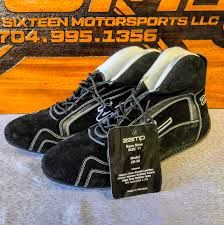Comparing Racing Gear: What You Need to Know Before Buying
Understanding Your Racing Needs
Before diving into the world of racing gear, it's crucial to identify your specific needs. Are you a beginner looking to explore the thrill of racing, or an experienced racer aiming to upgrade your equipment? Your level of expertise will significantly influence the type of gear you should consider. A novice might prioritize comfort and ease of use, while a seasoned racer may focus on performance and advanced features.

Helmets: Safety First
The helmet is arguably the most critical piece of racing gear. It not only protects your head but also plays a role in aerodynamics. When comparing helmets, look for certifications like Snell or DOT, which ensure safety standards are met. Additionally, consider the weight, ventilation, and fit of the helmet. A lighter helmet reduces neck strain during long races, while proper ventilation helps keep you cool under pressure.
Another factor to consider is visibility. Helmets with wider visors offer a better field of view, which can be crucial during high-speed races. Also, check for anti-fog and anti-scratch features on visors to maintain clarity in various weather conditions.
Suits: Balancing Comfort and Protection
Racing suits are designed to provide both protection and comfort. They are typically made from fire-resistant materials like Nomex, helping protect against heat and flames. When selecting a suit, ensure it fits snugly but allows for a full range of motion. Some suits come with additional padding or reinforced areas for added protection.
The suit's weight and breathability are also important considerations. A lighter suit can enhance mobility, while good breathability ensures comfort during long races. Many racers opt for suits with ventilation panels to improve airflow.

Gloves and Shoes: Grip and Control
Gloves and shoes are essential for maintaining control during a race. Racing gloves should provide a secure grip while allowing for tactile feedback from the steering wheel. Look for gloves with reinforced palms and fingers for durability. Additionally, ensure they fit well to maintain dexterity.
Racing shoes should offer a balance of comfort and functionality. A thin sole can improve pedal feel, which is crucial for precise control. Consider boots with ankle support and a snug fit to enhance stability during a long race.

Additional Gear: Enhancing Performance
Beyond the basics, there are various accessories that can enhance your racing experience. Neck braces, for instance, provide additional support and reduce fatigue during longer races. Similarly, racing seats with proper harnesses ensure safety and help maintain optimal posture.
Consider investing in Raceiver devices if you participate in races with race control one-way communication . Also, some racers opt for custom earplugs to protect against prolonged noise exposure while maintaining situational awareness.
Conclusion: Making the Right Choice
When comparing racing gear, it's essential to balance safety, comfort, and performance. Take the time to research and try different options before making a purchase. Remember that investing in high-quality gear can significantly impact your racing experience and safety on the track.
Ultimately, the best racing gear is one that meets your specific needs and enhances your performance. With the right equipment, you can focus on what truly matters—enjoying the thrill of racing.
